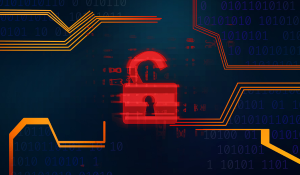14 different types of cyberattacks
In this relentless digital battlefield, businesses and organizations are pitted against a multitude of adversaries ranging from individual hackers...

Among the numerous cyber threats lurking on the horizon, phishing attacks have emerged as a formidable adversary. Like a stealthy predator, these attacks prey on human trust and curiosity, posing a significant risk to businesses of all sizes and industries.
| TABLE OF CONTENTS |
We will explore the various forms that these attacks take, dissect the tactics employed by cybercriminals, and most importantly, equip you with the knowledge and tools necessary to fortify your organization's defences against this pervasive threat.
Phishing is a type of cyberattack characterized by fraudulent attempts to obtain sensitive and confidential information, such as usernames, passwords, credit card details, or personal data, by masquerading as a trustworthy entity in various forms of communication, including emails, messages, or phone calls. Attackers often masquerade as trustworthy entities, such as banks, social media platforms, government agencies, or well-known companies, to gain the trust of their targets.
These deceptive tactics are used to manipulate individuals into revealing their private information, which can then be exploited for fraudulent purposes, including identity theft, financial fraud, or unauthorized access to accounts and systems. Phishing attacks typically occur through various communication channels, such as email, text messages, phone calls, or even social engineering in person.
While malware is the "intruder," phishing is the trick used to get that intruder through the front door. Imagine a person arrives at your secure building dressed as a trusted courier, carrying a package that looks exactly like your usual office supplies. Because they look official and claim there is an "urgent delivery issue," you swipe your keycard to let them into the restricted mailroom.
In reality, the "courier" is a scammer in a costume, and the "package" contains the tools they need to rob the building. Phishing works the same way: it uses a fake but familiar-looking email or message to trick you into swiping your digital "keycard" (your password) or opening the door for an intruder (downloading malware).
While both pose serious security risks, phishing and spoofing employ distinct tactics. For IT professionals tasked with safeguarding critical infrastructure, understanding these differences is vital for effective defense. Here's a breakdown of the key distinctions.
In essence, phishing is a social attack that manipulates people, while spoofing is a technical attack that manipulates systems. Both can be used together, but they are not the same thing.
To better understand the anatomy of a successful phishing attack, it's helpful to consider the '4 Ps':
Recognizing these '4 Ps' allows IT professionals and end-users alike to dissect phishing attempts and understand the psychological manipulation at play, bolstering defenses against these pervasive attacks.
Phishing takes on various forms, each with its own approach and targets. One common type of phishing is email phishing, where attackers send deceptive emails posing as trusted entities to trick recipients into revealing sensitive information.
A phishing attack typically follows a series of steps, with the ultimate goal of tricking individuals into divulging sensitive information or taking harmful actions. Here are most common steps during phishing attack.

Target Selection: The attacker selects a target or a group of targets. Phishing attacks can be broad-based, targeting a large number of individuals, or highly targeted (spear phishing) with a specific victim or organization in mind.
Crafting a Deceptive Message: The attacker creates a fraudulent message that appears to be from a legitimate and trusted source, such as a bank, government agency, social media platform, or well-known company. This message can take the form of an email, text message, phone call, or even in-person interaction.
Establishing Trust: The phishing message is designed to gain the trust of the recipient. This is often done by using official logos, branding, and language that mimics the genuine source. Attackers may also use social engineering techniques to create a sense of urgency, fear, or curiosity to manipulate the victim's emotions.
Deceptive Content: The message typically contains content that prompts the victim to take action. This can include:
Delivery: The attacker sends the phishing message through email, text messages, phone calls, or other communication channels. In some cases, they might use techniques like caller ID spoofing or domain impersonation to appear more convincing.
Victim Interaction: If the recipient falls for the deception, they may click on a malicious link, download an infected attachment, or provide sensitive information as requested in the message.
Data Theft or Malware Installation: Depending on the specific attack, the consequences can vary:
Concealing Tracks: After successfully compromising a victim, the attacker may cover their tracks by deleting traces of their presence or by using various evasion techniques to avoid detection.
Phishing attacks are dangerous because they exploit trust and human psychology. Individuals and organizations must remain vigilant and adopt cybersecurity best practices to recognize and defend against these deceptive tactics. This includes verifying the authenticity of messages, avoiding clicking on suspicious links or downloading unknown attachments, and reporting phishing attempts to relevant authorities or IT departments.
The insidious nature of phishing attacks poses a significant and evolving threat to organizations across all sectors. These attacks, designed to deceive employees into revealing sensitive information, exploit human vulnerabilities and can lead to devastating consequences. Beyond the immediate financial losses, phishing incidents can damage an organization's reputation, disrupt operations, and compromise critical data. Understanding the specific reasons why phishing is so problematic for diverse organizations is crucial for implementing effective defense strategies.
Given these factors, it's clear that phishing is not just an annoyance but a substantial and ongoing challenge for organizations. Preventative measures, employee education, and robust cybersecurity practices are essential to mitigating the risks associated with phishing attacks.
Implementing robust email filtering and anti-phishing tools is a crucial first step in preventing phishing attacks, as it helps identify and block suspicious emails before they reach employees' inboxes. Here are more tips:
1. Employee Training and Awareness:
2. Email Filtering and Anti-Phishing Tools:
3. Multi-Factor Authentication (MFA):
4. Secure Website Practices:
5. Regular Software Updates and Patch Management:
6. Employee Email Addresses Protection:
7. Strong Password Policies:
8. Phishing Reporting Procedures:
10. Segmented Network Security:
11. Regular Security Audits and Assessments:
12. Vendor and Third-Party Risk Assessment:
13. Data Encryption:
14. Monitoring and Logging:
15. Regular Updates and Training:
16. Zero Trust Security Model:
By implementing these measures and fostering a culture of cybersecurity awareness, companies and organizations can significantly reduce their susceptibility to phishing attacks and enhance their overall security posture.
As the cybersecurity landscape continues to shift, the battle against phishing attacks must be ongoing and adaptive. Educate your teams, keep your security measures up-to-date, and remember that the best defense is a combination of technology and human awareness.
It's crucial to remember that we are not defenceless in the face of phishing attacks. With a proactive approach to security, a well-informed workforce, and the implementation of robust preventive measures, organizations can stand strong against these digital threats.
Find out how DriveLock's Hypersecure Platfrom can improve your organization's defenses against phishing and other threats by signing up for a free demo.

In this relentless digital battlefield, businesses and organizations are pitted against a multitude of adversaries ranging from individual hackers...

In the age of digital connectivity, organizations and businesses are more reliant on email communication than ever before. While email serves as a...

The holiday season is a time of joy, giving, and unfortunately, increased cyber threats. As we gear up for festive celebrations, cybercriminals are...